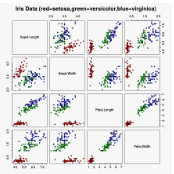The numbers of persons who can be enrolled by their iris patterns with no identity collisions is studied in relation to the biometric entropy extracted, and the decision operating threshold. The population size at which identity collision becomes likelier than not, given those variables, defines iris "capacity." The general solution to this combinatorial problem is derived, in analogy with the well-known "birthday problem." Its application to unique biometric identification on national population scales is shown, referencing empirical data from US NIST (National Institute of Standards and Technology) trials involving 1.2 trillion (1.2 x 10^(12) ) iris comparisons. The entropy of a given person's two iris patterns suffices for global identity uniqueness.
翻译:暂无翻译


